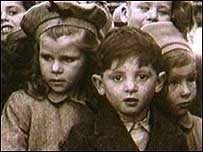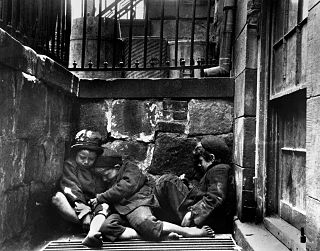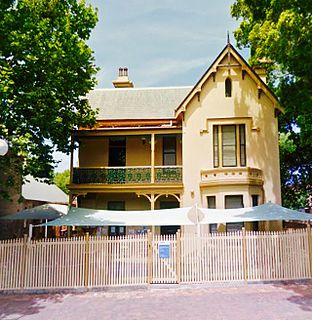
Historically, an orphanage was a residential institution, or group home, devoted to the care of orphans and other children who were separated from their biological families. Examples of what would cause a child to be placed in orphanages are when the biological parents were deceased, the biological family was abusive to the child, there was substance abuse or mental illness in the biological home that was detrimental to the child, or the parents had to leave to work elsewhere and were unable or unwilling to take the child. The role of legal responsibility for the support of children whose parent(s) have died or are otherwise unable to provide care differs internationally.

Foster care is a system in which a minor has been placed into a ward, group home, or private home of a state-certified caregiver, referred to as a "foster parent" or with a family member approved by the state. The placement of the child is normally arranged through the government or a social service agency. The institution, group home or foster parent is compensated for expenses unless with a family member.
A behavior modification facility is a residential educational and treatment institution enrolling adolescents who are perceived as displaying antisocial behavior, in an attempt to alter their conduct. As of 2008 there were about 650 nongovernmental, residential programs in the United States offering treatment services for adolescents. Some similar institutions are operated as components of governmental education or correctional systems.
Residential care refers to long-term care given to adults or children who stay in a residential setting rather than in their own home or family home.
The Teaching-Family Model (TFM) is a model of care for at-risk, under-served and challenging populations ages birth to eldercare. The Teaching-Family Model is implemented internationally in foster homes, treatment centers, schools, intensive home-based treatment, residential and family homes, psychiatric hospitals, assessment centers and other youth and dependent adult care programs. The Teaching-Family Model was developed in the late 1960's through research at the University of Kansas. Researchers included Montrose Wolf and Gary Timbers. TFM has been replicated over 1,000 times, although not all of the replications have proven effective and successful. Successful and effective replication is dependent upon agencies and programs working with qualified developers and building sustainable capacities to implement standards and systems to ensure and manage fidelity.
Respite care is planned or emergency temporary care provided to caregivers of a child or adult.
Child and Youth Care (CYC) is a profession which focuses on the developmental needs of children and families within the space and time of their daily lives. Child and Youth Care is primarily a way of working with others and practitioners can be found in a variety of roles including direct care, private practice, educator, trainer, writer, supervisor, manager, researcher, and more. They are sometimes known as Child and Youth Workers, Child and Youth Counselors, Youth Workers, or Child and Youth Care Workers. There are strong connections around the world between Child and Youth Care and Social Pedagogy.
A residential treatment center (RTC), sometimes called a rehab, is a live-in health care facility providing therapy for substance abuse, mental illness, or other behavioral problems. Residential treatment may be considered the "last-ditch" approach to treating abnormal psychology or psychopathology.
Community-based care serves as a "bridge" between orphanage and settlement house. Adolescents are placed in a family in their community. The guardians will provide individual care and nurture in the context of a family and community. This teaches adolescents more independence.
The wraparound process is an intensive, individualized care management process for youths with serious or complex needs. Wraparound was initially developed in the 1980s as a means for maintaining youth with the most serious emotional and behavioral problems in their home and community. During the wraparound process, a team of individuals who are relevant to the well-being of the child or youth collaboratively develop an individualized plan of care, implement this plan, and evaluate success over time. The wraparound plan typically includes formal services and interventions, together with community services and interpersonal support and assistance provided by friends, kin, and other people drawn from the family’s social networks. The team convenes frequently to measure the plan’s components against relevant indicators of success. Plan components and strategies are revised when outcomes are not being achieved.
Child and family services is a government and/or non-profit organisation designed to better the well being of individuals who come from unfortunate situations, environmental or biological. People who seek or are sought after to participate in these homes have no other resource to turn to. Children might come from abusive or neglectful homes, or live in very poor and dangerous communities. There are also agencies that cater to people who have biological deficiencies. Families that are trying to live in stable lives come to non-profit organisations for hope of a better future. Child and family services cater to many different types of people who are all in different situations. These services might be mandated through the courts via a governmental child protection agency or they might be voluntary. Child and family services may be mandated if:
- There is domestic violence in the home
- There is abuse or neglect in the home
- Constant negativity amongst family members which could lead to violent behavior
- Physical abuse
- Emotional abuse
- Sexual abuse
Parent management training (PMT), also known as behavioral parent training (BPT) or simply parent training, is a family of treatment programs that aims to change parenting behaviors, teaching parents positive reinforcement methods for improving pre-school and school-age children's behavior problems.
The Massachusetts Department of Youth Services (DYS) is a state agency of Massachusetts. Its Administrative Office is headquartered in 600 Washington Street Boston. The agency operates the state's juvenile justice services.

Foster care is the term used for a system in which a minor who has been made a ward is placed in an institution, group home, or private home of a state certified caregiver referred to as a "foster parent". The placement of the child is usually arranged through the government or a social-service agency. The institution, group home or foster parent is provided compensation for expenses.
Project Re-ED, the Project on the Re-Education of Emotionally Disturbed Children, is a program to provide effective and affordable mental health services for children. The program focuses on teaching a child effective ways of acting in and responding to the child’s social groups and also working with those social groups to help them provide a more supportive environment for the child. It began as a pilot project in the 1960s at two residential facilities in Tennessee and North Carolina. It later expanded to more facilities, and the principles of treatment developed in the project have been replicated and adapted in many other programs.

Caretakers Cottage is an Australian non-profit, non-governmental organisation based in Sydney assisting children and young adults facing homelessness. Caretakers Cottage is funded by the New South Wales Department of Family and Community Services to provide services for young people across Sydney's South-Eastern district. Services include short-term, emergency accommodation, semi-independent living options, case support and early intervention for young people at risk of homelessness.
Congregate care is a term for placement settings that consists of 24-hour supervision for children in a varying degree of highly structured settings such as group homes, residential child care communities, childcare institutions, residential treatment facilities, or maternity homes. Such settings must be a licensed or approved home or facility that can take in 7-12 children, as seen in group homes, or 12 or more children, as seen in institutions.
Residential child care communities are part of the foster care system and combine several aspects of ways and means to raise a child.

Bomaderry Aboriginal Children's Home is a heritage-listed former Institutional home for Aboriginal children and now Nowra Local Aboriginal Land Council offices at 59 Beinda Street, Bomaderry, City of Shoalhaven, New South Wales, Australia. It was designed by United Aborigines Mission and built from 1908. It was also known as Bomaderry Children's Home; Bomaderry Babies Home; and United Aborigines Mission Home. The property is owned by Nowra Local Aboriginal Land Council. It was added to the New South Wales State Heritage Register on 17 February 2012.










